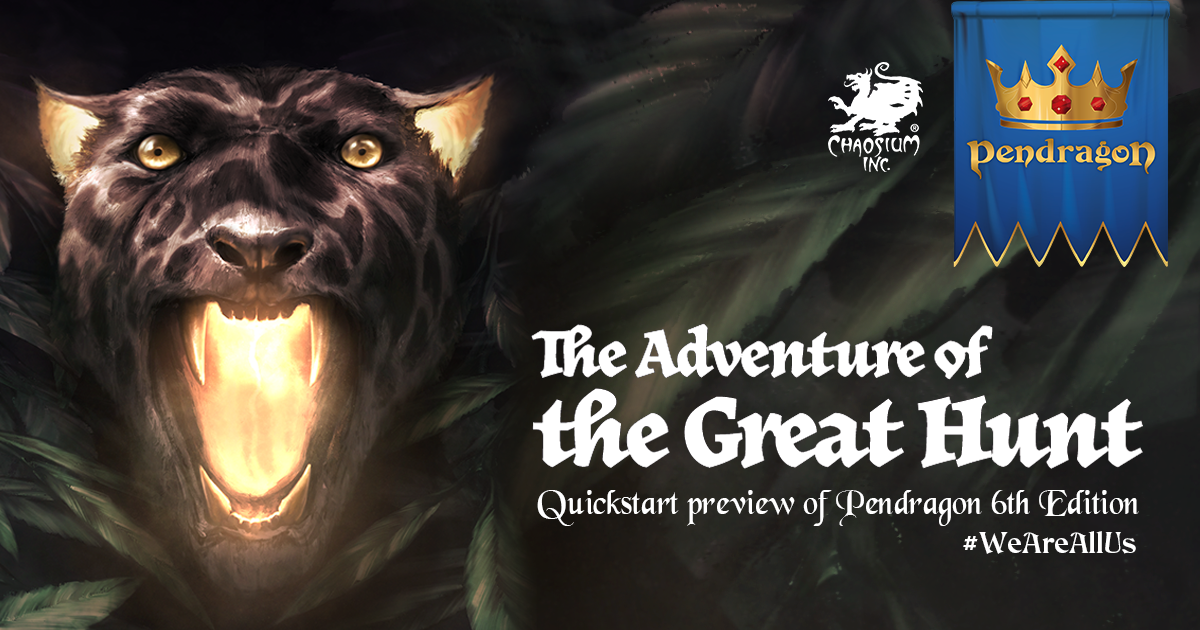Chaosium, on the second anniversary of company founder Greg Stafford's passing, has released a sneak look at the Pendragon 6th Edition rules and a free adventure. Pendragon is an Arthurian tabletop roleplaying game, first published in 1985. This 6th edition has been in the works for nearly a decade, and Stafford referred to it as the 'ultimate edition' of the game.

 www.chaosium.com
www.chaosium.com

The package contains the core rules, the adventure itself (The Adventure of the Great Hunt, which is designed as a one-shot single session of play), and six pre-generated characters. The six characters are The Adventuring Knight, The Champion Knight, The Courtier Knight, The Hardy Knight, The Hunter Knight, and The Religious Knight. Players are encouraged to come up with their own names and coats of arms.

The Adventure of the Great Hunt - a Quickstart preview of Greg Stafford's
This year for #WeAreAllUs, we salute Greg’s magnum opus with a free sneak peek of the 6th Edition core rules and an accompanying scenario, The Adventure of the Great Hunt, originally outlined by Greg way back in 1991 and presented here in print for the first time.
 www.chaosium.com
www.chaosium.com
The package contains the core rules, the adventure itself (The Adventure of the Great Hunt, which is designed as a one-shot single session of play), and six pre-generated characters. The six characters are The Adventuring Knight, The Champion Knight, The Courtier Knight, The Hardy Knight, The Hunter Knight, and The Religious Knight. Players are encouraged to come up with their own names and coats of arms.

